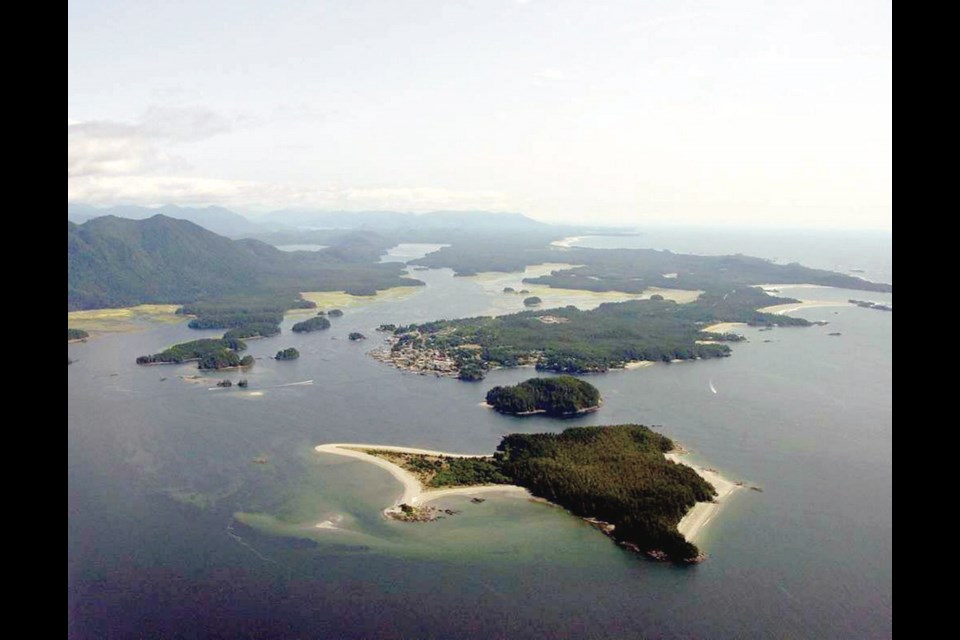The woman who first protected much of Clayoquot Island’s old-growth forest in 2008 has donated that forest to The Nature Conservancy of Canada.
Susan Bloom purchased the island just off Tofino in 1990 and registered a conservation covenant on about 70 per cent of it with Victoria’s The Land Conservancy, blocking development. At the time, the land was valued at more than $4 million.
On Feb. 29, Bloom’s donation of the 93 acres covered by the covenant was announced as “one of the largest and most generous” gifts ever received by the Nature Conservancy of Canada. The land and Bloom’s contribution to long-term stewardship is worth significantly more than $4 million, said the Nature Conservancy of Canada’s B.C. vice-president Linda Hannah.
“We’re deeply honoured to have been chosen as the recipient for this natural legacy gift,” she said, noting it ranks among the top donations both in Canada and in B.C. The handover was in the works for about two years.
The island, also known as Stubbs, is at the entrance to Clayoquot Sound, which in 2000 was designated as one of UNESCO’s World Network of Biosphere Reserves.
Hannah said that at the time Bloom purchased the island, the site of a town in the early 1900s, it was zoned for residential development.
The 93 acres contain mixed old growth and mature second growth coastal western hemlock forests, and a significant stretch of oceanfront with sand dunes, eelgrass beds, great blue heron, black oystercatchers and Pacific geoduck, the Nature Conservancy of Canada. said.
In a statement, Bloom said that from the first time she visited the island, her goal has been to protect it from more development, “to preserve it in its natural wild state and to remove years and years of accumulated human garbage and refuse.
“My recent lifetime goal is to see that this beautiful land, steeped in Canadian history, be placed into safe conservation hands and cared for in perpetuity.”
The Nature Conservancy of Canada will bring “an added measure of protection and management” to the island, Hannah said, with greater attention to ecological issues, including a baseline inventory of natural and cultural aspects, and archeological surveys. The Nature Conservancy of Canada will work out a management plan with UNESCO, First Nations and Parks Canada regarding a rare California wax myrtle, which is found in large thickets.
The island is traditional territory of the Tla-o-qui-aht, but in the late 1800s and early 1900s, it was home to a trading post and small fishing village. The town of Clayoquot had a hotel, saloon, post office, school and dozens of houses. Eventually, the population moved away as Tofino began to grow.
Tofino Mayor Josie Osborne called Bloom’s gift “just thrilling,” adding it will contribute to the culture, history and ecology of Clayoquot Sound. A cultivated garden of rhododendrons and other introduced plants is “unparalleled — there’s nothing else like it,” Osborne said. The rest of the island is wild. The only person living there is a caretaker, but Bloom opens the island to the public on the May long weekend, Osborne said.
Hannah said she didn’t think the financial difficulties faced by The Land Conservancy of B.C. factored into Bloom’s decision to work with the Nature Conservancy of Canada. TLC entered into creditor protection in 2013.
The Nature Conservancy of Canada has helped protect more than 2.8 million acres in Canada since 1962, with a significant proportion of that in B.C., Hannah said.



